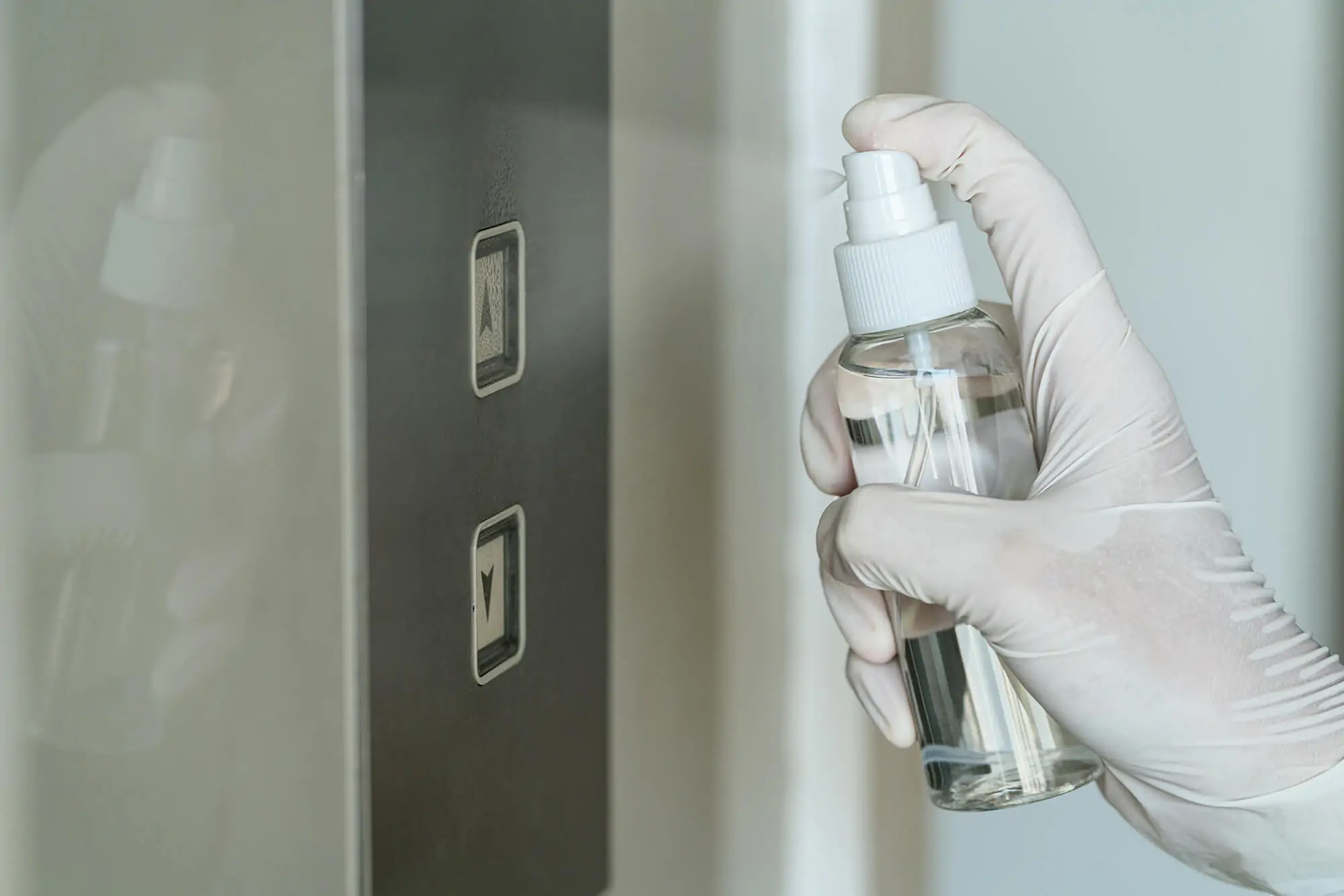12 Jun

Difficult times call for difficult measures. What can be more difficult than the situation the whole world is currently in? We are all struggling between maintaining social distancing and realizing that this is now going to be the new normal. COVID-19 is here to stay. Even when vaccines for the virus are introduced, they are going to reduce the chance of contracting it, but the virus itself isn’t going anywhere. This calls for updated health and safety compliance for the workplace keeping the new normal in mind.
The world has realized that it can’t be in lockdown forever. People have started going back to work and it is impractical to assume that there will be no interaction. The only way we can prevent the virus from spreading at an alarming rate and gradually reduce its impact is if we abide by the new and updated COVID-19 workplace safety compliance guidelines.
How the COVID-19 Outbreak has Affected Workplaces
The pandemic has had a huge effect on workplaces just like it has had on life in general in the whole world. People have started going back to work but nothing remains the same. There are several ways in which the outbreak has made an impact on workplaces.
Downsizing
The first impact that is apparent has been the number of companies that have laid off several employees. These are difficult times for everyone and companies are losing a lot of money. They are trying their best to keep afloat by either cutting salaries or laying off workers.
Absenteeism
Employees are scared of losing their jobs, but they are even more scared of losing their lives and risking the lives of their loved ones. Hence a lot of organizations that are still operating are facing quite a lot of absenteeism on the part of their employees. This could be because they are sick and don’t want to expose others, have to care for children or elderly because of a lack of schools and other care facilities, or even have someone exposed at home.
Change in Commerce Patterns
The pandemic is affecting all workplaces differently depending on their industry. That’s because worldwide shopping and purchasing patterns have changed. More people are opting for home delivery rather than venturing out. They are opting to buy less of something that is perhaps not that much of a necessity, whereas the pharmaceutical and hygiene products are on an all-time high.
Work from Home
A lot of companies that could afford to offer their employees the chance to work from home did so in order to stay safe as well as adhere to social distancing parameters. However, as the scene shifts again, and people are getting back to work, people are contemplating whether they should continue or move their employees back to work if productivity has more or less remained the same.
What Does COVID-19 Workplace Safety Compliance look like?
Suffice to say, offices are not going to be the same as they were before at least in the new future. So even though workplace safety compliance may look a bit daunting right now, it’s in the best interest of the employees. Safety at work is a necessity, and this safety is more critical than the safety spoken about when you are required to design workstations keeping OSHA ergonomics in mind. Covid-19 specific safety is about saving people’s lives. If people feel unsafe, they will only get scared. Productivity will only increase if the employees are motivated. They will only remain motivated if they feel safe.
If you’re wondering if offices will start looking like hospitals, then that’s not the case. But be prepared for desk placement to be according to social distancing standards, and everyone wearing masks. You should also be prepared for lots of scheduled and unscheduled health checks and other such measures taken for workers’ health and safety.
Safety compliance needs to be a mindset change more than just what it looks like at the outset. If you wish your company to start back without any hurdles, you need to not only comply with the guidelines provided for your workers’ safety, but you need to adopt it as a mindset. This is so that it’s a part of every decision you take.
Your Commitment to Employees Safety
The most important stimulus for a proactive approach to safety compliance is your commitment to your employees’ safety. It is when you train your senior management to recognize the importance of the new safety guidelines and prioritize them. Once these managers have a good understanding of the importance of safety compliance and are committed to it, it’s easier to understand it as one of the key drivers of success. Health and safety compliance has a direct impact on almost all key objectives, whether it’s reducing overhead costs or boosting productivity. Your commitment to the safety of your workers plays a vital role.
The Need for the Right System to Ensure Health and Safety Compliance
Managing health and safety compliance without a proper system in place may prove to be challenging. There are different systems that you can purchase off-the-shelf to manage and monitor safety but it’s important to customize these systems to the needs of your company and the health and safety guidelines that apply to you. These systems also need to be simple, accessible, and relevant so that each and every worker finds compliance so easy that it becomes a part of the way they do things.
Safety Compliance Training
Change is inevitable. However, change is highly disliked by most people because people tend to get comfortable with their way of doing things in a certain way. To overcome this, your entire workforce has to go through a workplace safety compliance training, which will help them understand that these new protocols and guidelines are for their own betterment. To adopt safety as a part of your work culture, it will obviously take time.
A Checklist of COVID-19 Safety Compliance Guidelines
According to OSHA workplace safety steps and CDC guidelines, we have made a checklist for you to take help from and abide by. For legal purposes, please do visit the CDC and OSHA websites.
Before opening up and resuming work:
- Develop a prep and response plan for COVID-19
- Develop procedures and policies for identifying and isolating employees appearing to be sick or sending them back home
- Develop employee pay, leave, safety, and health policies in the wake of COVID-19 and inform your workers about them so that they feel safe
- Design work
- Implementation of Engineering controls
- Install air filters with high efficiency
- Make sure there is more than adequate ventilation
- Install physical barriers
- For customer service, install drive-through windows
- Install specialized ventilation with negative pressure where required
- Implementation of administrative controls
- Discontinuation of non-essential travel
- Development of emergency communication plans
- Training the workers on COVID-19 safety precautions
- Training workers about any protective clothing or equipment they need
- Implementing safe work practices
- Providing and promoting basic personal hygiene items
- Handwashing signs installed in washrooms
- Provision of Personal Protection Equipment to those needed
- Make provision for scheduled employee health screenings
- Minimize contact between workers, customers, and clients and replace physical meetings with virtual ones unless necessary
- Implement flexible and supportive sick leave policies
- Create systems that can be used by employees to self-assess and self-report
- Ensure that the water system of your premises is adequately safe after a prolonged shutdown
- Plan a daily virtual health check and temperature screening before employees enter the premises
- Develop and implement a cleaning and disinfection plan for the entire office
After opening up and resuming work, guidelines for employees:
- Stay home if you are sick
- Follow CDC guidelines and let your supervisor know if someone in your household is sick
- Stay home if you have symptoms
- Use hand sanitizer or wash your hands often for 20 seconds at least with soap and water
- Avoid touching your eyes, mouth, and nose
- Cover your mouth and nose while sneezing with a tissue
- Avoid using the phone, desk or any other equipment of other employees
- Disinfect if you have to share equipment
- Avoid large gatherings
- Use face masks at all times or cloth face coverings
- Do not shake hands
- Maintain six feet distance at all times with all people
- Sanitize your hands before you enter the premises and before you leave
This list is to help you identify how you need to handle and monitor safety in your workplace in the wake of COVID-19. Having said everything, there will come a time when rules will relax and people will start mingling again. However, some rules which have been made during this time are here to stay. It’s important to adhere to all these workplace health and safety guidelines so that you can take care of your employees’ safety. An excellent safety record is an asset for a company.




Ecodocs